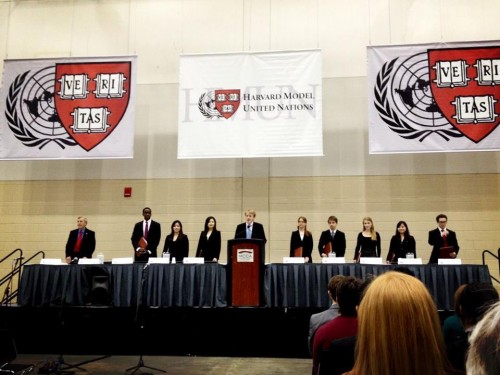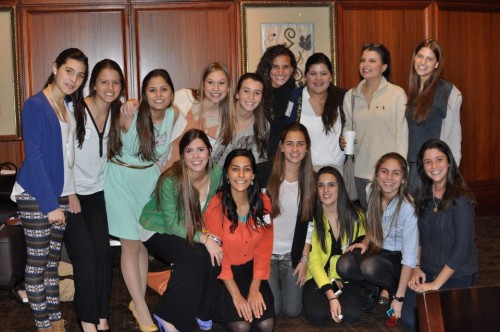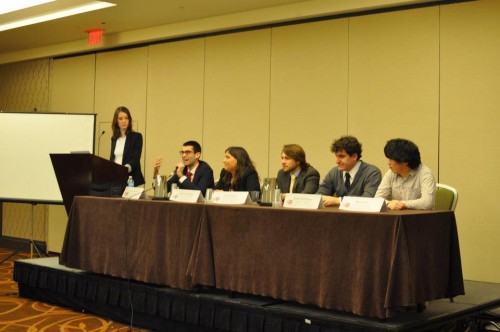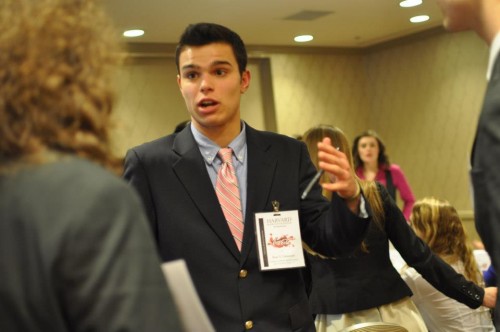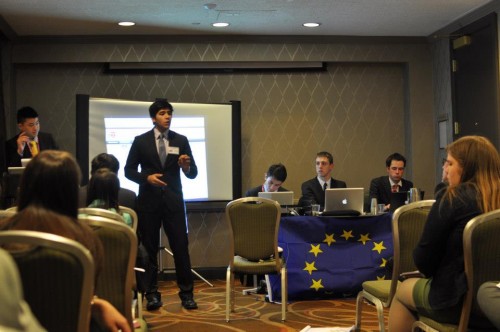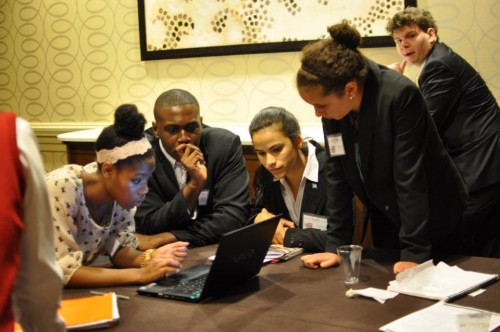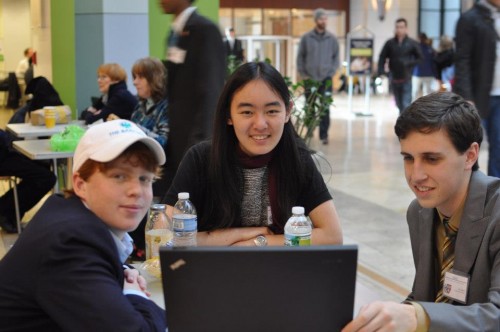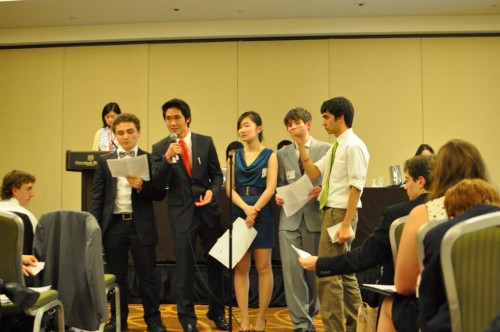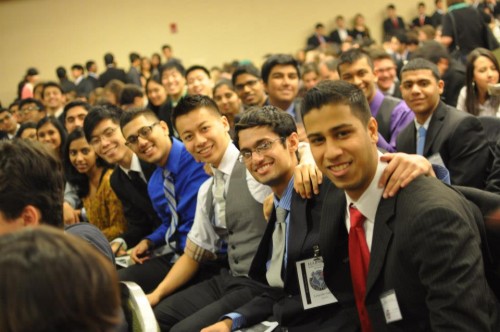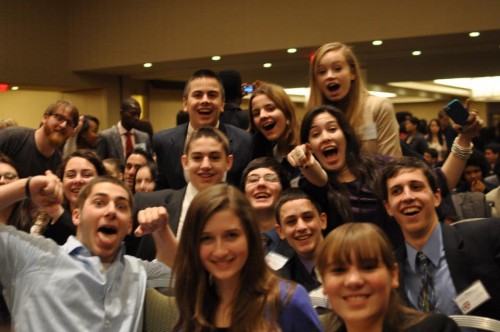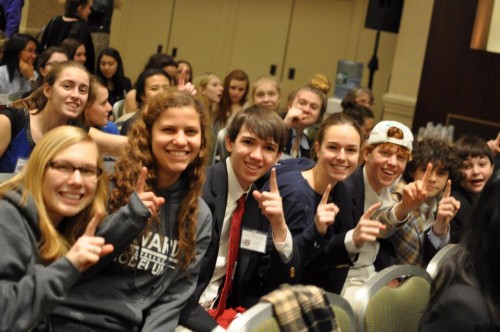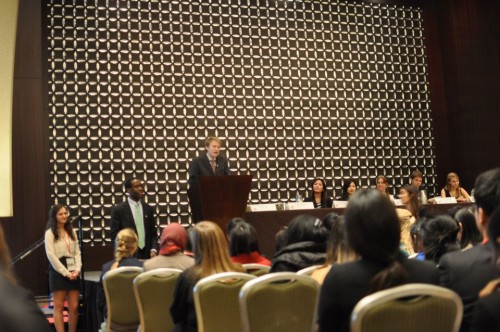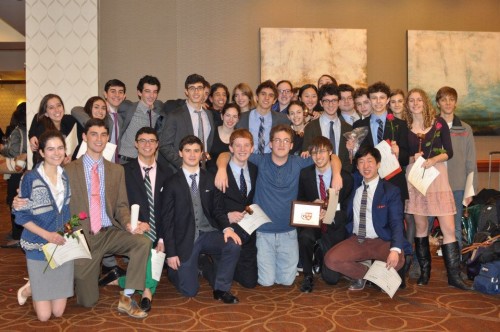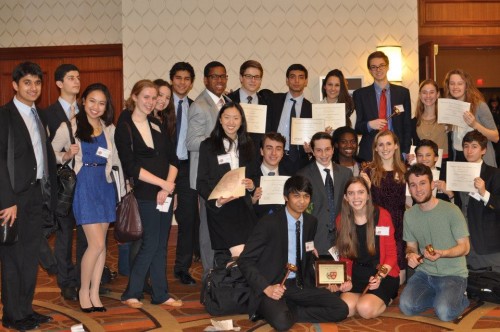Secretary-General Ethan Lyle mentioned HMUN’s roots in the 1920s when it was a Model League of Nations — making HMUN older than the UN itself — and how the conference has impacted many leaders to pursue international diplomacy in the past sixty years. Although there are many challenging issues to tackle, including the threat of nuclear proliferation as mentioned by keynote speaker Dr. Graham Allison, Mr. Lyle hopes that when HMUN celebrates its 100th anniversary it can look back at all the previous sessions and recognize the value this conference contributes to empowering future leaders and a brighter future.
HMUN 2013 featured high quality of debate in its 29 committees that spanned a range of traditional General Assembly and ECOSOC committees to more specialized agencies and crisis cabinets. HMUN is also somewhat closer to simulating the real UN than many conferences in North America, with examples including the usage of informal consultations in the Security Council and only allowing one resolution to pass in committees (most UN bodies adopt only one resolution by consensus without a need to even go into voting procedures).
Although HMUN has a reputation for being competitive, I noticed an emphasis on the educational side of MUN from the speeches, panels, and programming throughout the weekend. This included the brand new HMUN Academy that featured a broad range of pre-conference delegate training, an alumni panel to provide insight onto how HMUN has influenced the careers of Harvard undergrads, and a speaker series and keynote speaker reception for the faculty advisors. Events also included Harvard tours, a college and summer opportunities fair, HMUN’s first-ever Cultural Extravaganza featuring performances by Harvard cultural groups, and the delegate dance. In addition, the conference raised over $10,900 for charity:water!
Finally, HMUN is one of the most if not the most international MUN conference in the Western hemisphere. Over 100 schools were represented among the 37 countries outside the United States with many of them being some of the top teams in the world. The huge international presence makes the conference unique in committee, and the presence of many Latin American teams made it possible to run a Spanish-language committee in the joint crisis. The international diversity also presents a chance for cultural exchange outside of committee. For example, I was invited to visit an informal dinner where the Jewish students at the Abraham Joshua Heschel School of New York were hosting for the Muslim students of The Lyceum School of Pakistan. These are the types of experiences that could possibly have more influence over these students’ world views than anything committee could produce.
We have some photos from the conference below, but make sure to check out these two links for more coverage!
- Harvard MUN Herald (Press Corps)
- HMUN Facebook Photo Album
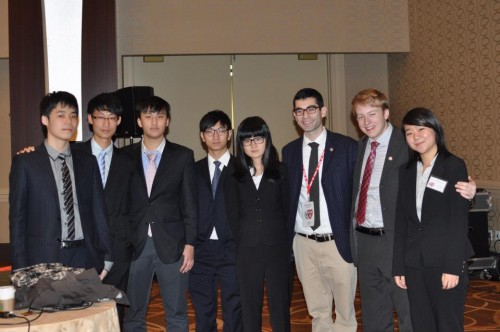
Harvard legend Hunter Richard led a group of his students from Guangzhou, China to HMUN 2013. Their team takes a photo with HMUN 2013 Secretary-General Ethan Lyle.
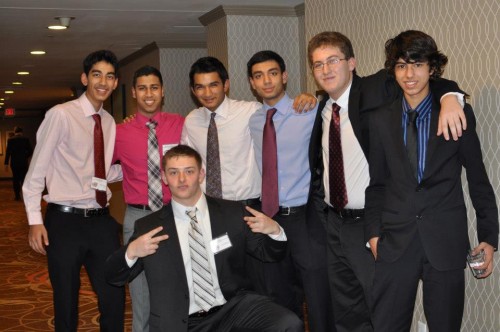
Power Players: some of the best delegates in the world work together in the HMUN 2013 Security Council
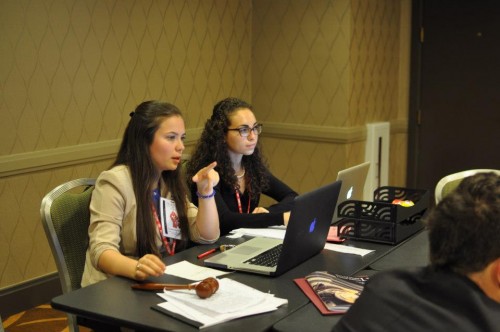
Chairs select the next speaker in the Joint Crisis between Liberacion de las Americas and School of the Americas
Awards
- Best Large Delegation: The Dalton School
- Outstanding Large Delegation: University of Chicago Laboratory School
- Best Small Delegation: Centennial High School
- Best International Delegation: Ecole Active Bilingue Jeannine Manuel
Also, the HMUN Video Contest Winner: Marcos de Niza High School
The Dalton School reclaimed its title as the Best Large Delegation at HMUN with a strong performance that included gavels in 11 committees (according to my unofficial tally). The University of Chicago Laboratory School received the Outstanding Large Delegation award and kept the competition close as they had the same number of delegates receive awards as Dalton did but a lower weighted score.
J.P. Stevens High School had a strong all-around performance to contend for a large delegation award and finish third. Oceanside High School also did well, especially in the traditional UN committees, to finish fourth. Poughkeepsie Day School was particularly strong in the specialized agencies, and New Canaan High School also put in a well-rounded effort. Centennial High School traditionally participates in IMUNA-hosted conferences, and their diplomatic delegates stood out in the mid-sized committees and enabled them to be recognized as the Best Small Delegation. Other domestic schools that performed well include Choate Rosemary Hall, St. John’s Prep, The Bromfield School, The Kew-Forest School, Bedford High School, St. Luke’s School, and Scarsdale High School.
Ecole Active Bilingue Jeannine Manuel from France received the Best International Delegation. The Cathedral and John Connon School (India) also contended for the best international delegation award. Other international schools that did well include but are not limited to The Lyceum School (Pakistan), The Doon School (India), Unidad Educative Academia Washington (Venezuela), The Skinner’s School (United Kingdom), Robert College (Turkey), and Academia Merici (Venezuela).
**
Congratulations to all the delegates and staff on a successful HMUN 2013! Don’t forget to check out these two links for more content:
- Harvard MUN Herald (Press Corps)
- HMUN Facebook Photo Album
Thanks to Secretary-General Ethan Lyle for having me attend, Director-General Ainsley Faux for coordinating my visit, USG of Business Da-Bin Ryu for helping me before the conference, USG of ECOSOC Lisa Wang for the warm welcome, and HMUN alumnus extraordinaire Hunter Richard for all your help during the conference.
Finally, special thanks to all the teams that either coordinated a meeting or had a spontaneous introduction with me during the conference — it was an absolute treat to meet so many teams from around the world!

